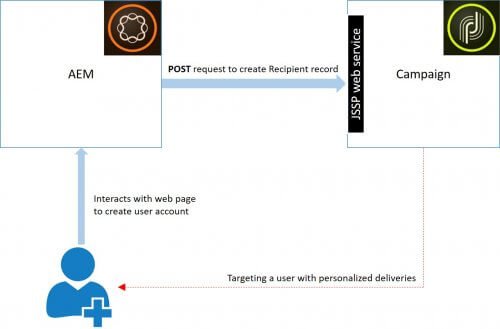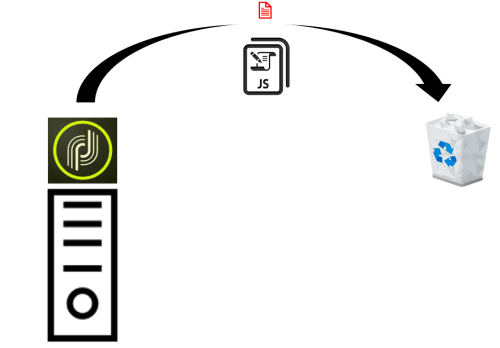In the world of sales and marketing, the terms “Lead,” “Prospect,” and “Opportunity” can often be confusing, especially with the rise of marketing automation and CRM systems. Different vendors and business practices contribute to varying definitions of these terms. Some consider leads to be qualified prospects, while others see prospects as developed from leads. To make matters even more complex, business practitioners and technical teams often interpret these terms differently.
To simplify:
Lead vs Prospect: Understanding the Key Differences
At their core, the key difference between a Lead and a Prospect lies in the mode of communication and user engagement. Below is a comparison of their attributes:
| Lead | Prospect | |
| Communication | One-way | Two-way |
| Touch point | Form submission or sign-up | Email threads, phone calls, meetings |
| Method of communication | Contacted via generic automated programs or CTAs | Highly personalized emails or direct contact |
| Location in Sales funnel | Top of the funnel (initial stage) | Close to making a purchase decision |
Summary:
A Prospect is a qualified lead that has demonstrated a clear interest in making a purchase, shown through two-way interactions like emails, calls, or meetings.
What is an Opportunity?
An Opportunity is a prospect that has agreed to engage with your sales team and is open to hearing a sales pitch. It’s a crucial stage where the customer either moves forward with a purchase or walks away.
At this point in the sales process, prospects are not yet buyers—until they express interest in considering your solution seriously. If they don’t see a benefit in your product or service, they remain a lead or a disqualified prospect.
Adding Depth to Your Sales Funnel Stages
In sales, understanding the distinction between Leads, Prospects, and Opportunities is crucial to navigating your sales funnel. By clearly defining these stages, you can improve how you manage your sales pipeline, tailor communication efforts, and ultimately drive better conversion rates. Here’s a deeper dive into each stage and its importance.
Lead: The First Point of Contact
At the lead stage, you’re essentially working with a potential customer who has shown some interest, but not necessarily in a buying context. This could be someone who filled out a contact form on your website or downloaded a piece of content like an eBook. The key here is one-way communication, where your team typically reaches out to these leads with automated marketing campaigns or calls-to-action (CTAs).
Real-Life Example:
A lead could be someone who downloaded a free trial of your software, but has not yet engaged with your sales team directly. You may send them automated emails with tips on using the software or general product updates, but there is no direct interaction at this point.
Prospect: Engaged and Qualified
Once a lead has demonstrated a deeper interest, such as responding to a follow-up email, participating in a demo, or requesting more information, they become a prospect. Prospects are qualified leads—meaning they meet certain criteria, such as interest in your product and fit for your solution.
Unlike leads, prospects are part of a two-way communication cycle. This is where your sales team steps in for personalized outreach. It’s a key stage where you start having one-on-one interactions with potential customers.
Real-Life Example:
Consider a situation where a lead downloads an eBook on how to improve team productivity. After receiving the ebook, the lead responds to a follow-up email asking for a demo of the software mentioned. At this point, this lead is now considered a prospect because they’ve engaged with the content and shown interest in a personalized conversation.
Opportunity: Decision Time
Now we come to the Opportunity stage, where prospects have expressed clear interest in your solution. They’re actively considering it as a potential purchase. This is a key point in the sales cycle, as it’s where the sales pitch happens.
The critical difference between a prospect and an opportunity is that an opportunity is a prospect who has shown a clear intent to move forward in the decision-making process. This could involve evaluating the product’s fit for their business, discussing terms, or negotiating price.
Real-Life Example:
Imagine you’re selling an enterprise software solution. After several personalized emails, calls, and meetings, the prospect tells you that they are ready to evaluate the product’s cost structure in more detail. They may also request a final demo with specific use cases for their team. This is now an Opportunity—a clear sign that they are considering making a purchase decision.
Why These Terms Matter in Sales Strategy
Each of these stages plays a unique role in the buyer’s journey. For your sales team, understanding where each prospect is in this process helps you:
Segment Your Communication: Personalize your outreach based on whether you’re engaging with a lead, prospect, or opportunity. A lead may need general marketing content, while a prospect might require in-depth product demos or case studies.
Optimize Resource Allocation: You can prioritize your time and resources based on the stage of each contact. It’s more beneficial to focus high-touch sales efforts on opportunities than on leads that are still in the awareness phase.
Drive Higher Conversion Rates: Understanding the journey allows you to deliver the right message at the right time. For example, if a lead is moving toward becoming a prospect, providing additional content on product benefits or case studies will nurture them into the next stage.
Track Sales Performance: Categorizing your contacts and tracking where they are in the funnel can help you monitor your sales team’s performance and identify where potential bottlenecks exist. Are prospects dropping off before reaching the opportunity stage? It may indicate that certain aspects of the sales process need improvement.
Conclusion: The Power of a Well-Defined Sales Funnel
Understanding the Lead vs Prospect vs Opportunity distinction helps you navigate the sales funnel more effectively. By categorizing your contacts and tailoring your approach, you can maximize your team’s efficiency, improve customer interactions, and ultimately drive more sales.
In the end, effective communication and engagement at each stage of the funnel—lead, prospect, or opportunity—are essential for achieving business success. With clear definitions and strategies in place, your sales efforts will not only be more organized but also much more effective in moving leads through the funnel to becoming loyal customers.




